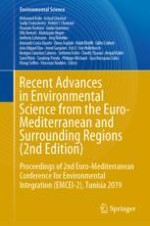2021 | OriginalPaper | Buchkapitel
Which Is a More Reliable Bioindicator—Mussels or Seagrass? A Case Study of the Toxic Metal Pollution in the Seawater of Boka Kotorska Bay, Adriatic Sea
verfasst von : Slavka Stankovic, Ana Perosevic, Lato Pezo, Stevan Blagojevic, Antonije Onjia
Erschienen in: Recent Advances in Environmental Science from the Euro-Mediterranean and Surrounding Regions (2nd Edition)
Aktivieren Sie unsere intelligente Suche, um passende Fachinhalte oder Patente zu finden.
Wählen Sie Textabschnitte aus um mit Künstlicher Intelligenz passenden Patente zu finden. powered by
Markieren Sie Textabschnitte, um KI-gestützt weitere passende Inhalte zu finden. powered by
